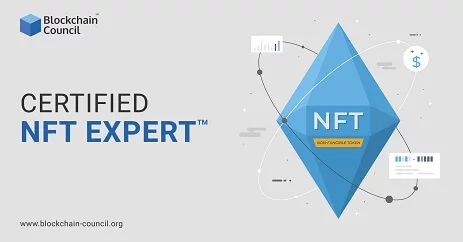
- Blockchain Council
- February 17, 2025
Introduction
In the world of cryptocurrency, understanding how to read crypto charts is essential for traders and investors alike. Technical analysis (TA) is a tool that enables market participants to predict future price movements based on historical price data, volume, and other technical indicators. Whether you’re just getting started or looking to enhance your trading skills, this beginner’s guide will walk you through the basics of reading crypto charts and utilizing TA to make informed decisions.
By the end of this guide, you’ll be able to interpret crypto charts with confidence and utilize TA for more strategic trades. Additionally, you can enhance your trading skills by exploring the Certified Cryptocurrency Trader™ (CCT) certification, which deepens your expertise in market tactics and trading strategies.
What Is Technical Analysis in Cryptocurrency?
Technical analysis (TA) is a method of analyzing price data of cryptocurrencies to identify patterns and trends. Crypto charts, which plot the historical price movements of digital assets, provide the foundation for technical analysis. By using these charts and applying specific indicators, traders can forecast the future price movements of a cryptocurrency.
While fundamental analysis looks at external factors such as news, events, and market sentiment, TA focuses solely on the price history of the asset. Understanding TA is a crucial skill for any cryptocurrency trader, which is why the Certified Cryptocurrency Trader™ (CCT) certification is so valuable. It equips you with the knowledge needed to analyze crypto charts effectively and trade confidently.
Why Is Technical Analysis Important for Crypto Traders?
Technical analysis plays a vital role in the cryptocurrency market for several reasons:
- Predicting Price Movements: By recognizing patterns and trends, traders can predict where the price of a crypto asset is likely to go.
- Identifying Entry and Exit Points: Knowing when to enter or exit a trade is essential for profit-making. TA provides the tools to identify optimal points for buying or selling.
- Managing Risk: With the right indicators, traders can spot signs of market reversal or volatility, minimizing potential losses.
- Objective Decision-Making: TA removes emotions from trading by offering a systematic and data-driven approach to market analysis.
Understanding Crypto Charts: An Overview
Crypto charts are graphical representations of a cryptocurrency’s price over time. The X-axis represents time (which can be measured in minutes, hours, days, weeks, etc.), while the Y-axis represents price. The chart helps traders visualize price movements and identify potential trends.
Types of Crypto Charts
The three most common types of crypto charts are:
- Line Charts: A simple chart type that connects closing prices with a continuous line.
- Candlestick Charts: Each candlestick shows the open, high, low, and close price for a specific time period. This type is the most popular due to the amount of information it conveys.
- OHLC Charts: Similar to candlestick charts, OHLC (Open, High, Low, Close) charts show the open, high, low, and close prices but in a different format.
Each chart type offers unique insights and is used based on the trader’s preference.
Key Components of Crypto Charts
When looking at crypto charts, it’s essential to understand the key components:
- Price Movements: This is the most fundamental part of the chart, showing how the price changes over time.
- Volume: Trading volume represents the number of trades made within a specific time period. Volume is a critical indicator of market strength and the confirmation of trends.
- Timeframes: Different timeframes give traders a better sense of short-term versus long-term trends. For instance, a 1-hour chart will give a more immediate view of the market, while a daily chart reflects long-term trends.
Popular Types of Crypto Charts
Crypto charts come in various formats, but the most popular ones are:
- Line Charts: Best for understanding long-term trends.
- Candlestick Charts: Widely used by traders for short-term analysis due to their depth of information.
- OHLC Charts: Ideal for traders who prefer a more concise view of price movements.
Each type can offer insights into market conditions, helping you determine if a coin is trending up or down.
Key Technical Indicators in Crypto
Some popular indicators used in crypto trading include:
- Moving Averages (MA): Helps smooth out price action and identify trends. Traders often use simple moving averages (SMA) or exponential moving averages (EMA).
- Relative Strength Index (RSI): Measures whether a crypto asset is overbought or oversold, helping traders spot potential reversal points.
- Bollinger Bands: Indicates volatility by plotting two standard deviations away from a moving average.
- MACD: A trend-following momentum indicator that helps identify bullish or bearish trends.
These tools are essential for traders aiming to refine their technical analysis. Exploring the Certified Blockchain Expert™ (CBE) certification will enhance your knowledge of blockchain technology and its interaction with crypto markets.
Understanding Chart Patterns
Chart patterns are visual formations that emerge when prices move in a particular way. Some common patterns include:
- Head and Shoulders: Often signals a reversal of trend.
- Double Top and Bottom: Indicates a trend reversal at the peak or trough.
- Triangles and Pennants: Formations that suggest continuation of a trend.
Mastering these patterns can give you an edge in predicting price movements.
Volume Analysis: The Key to Confirming Trends
Volume analysis is critical in confirming trends. Volume provides insight into the strength or weakness of a price move. High volume often accompanies strong trends, while low volume signals indecision in the market.
Risk Management with Technical Analysis
Technical analysis isn’t just about identifying trends; it’s also about managing risk. Setting stop-loss orders, using proper position sizing, and diversifying your portfolio are all part of effective risk management.
How to Create Your Own Crypto Trading Strategy
To develop a winning crypto trading strategy, incorporate the following:
- Technical Indicators: Use a combination of indicators for more accurate predictions.
- Chart Patterns: Identify key patterns that signal trend reversals.
- Risk Management: Always use stop-loss orders to limit potential losses.
Certifications like the Online Degree™ in Cryptocurrency & Trading can guide you in creating a robust and strategic trading approach.
Advanced Technical Analysis Tools
As you grow more experienced with reading crypto charts, consider utilizing advanced tools like Fibonacci retracement, Elliott Wave theory, and market depth analysis. These techniques can provide deeper insights into market dynamics and help refine your strategies.
Conclusion
Understanding how to read crypto charts is essential for any cryptocurrency trader. By applying the principles of technical analysis, you can gain a better understanding of market trends, make informed decisions, and potentially maximize profits.
Start your journey to mastering technical analysis by earning certifications like the Certified Cryptocurrency Trader™ (CCT), Certified Blockchain Expert™ (CBE), and Online Degree™ in Cryptocurrency & Trading. These programs will enhance your trading skills and prepare you for the exciting world of crypto trading.
Remember, the more you learn about technical analysis and chart reading, the better your chances of success in the crypto market. Keep refining your skills and continue learning from the best in the industry.





































































 Guides
Guides News
News Blockchain
Blockchain Cryptocurrency
& Digital Assets
Cryptocurrency
& Digital Assets Web3
Web3 Metaverse & NFTs
Metaverse & NFTs
